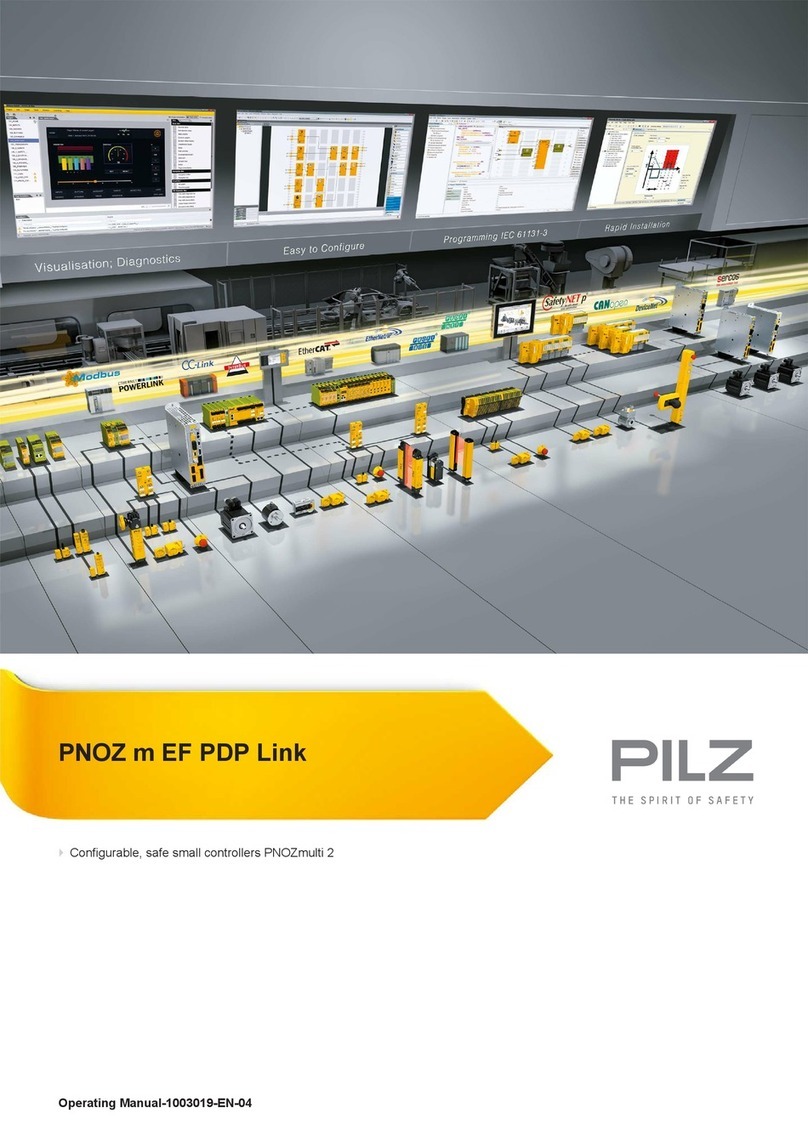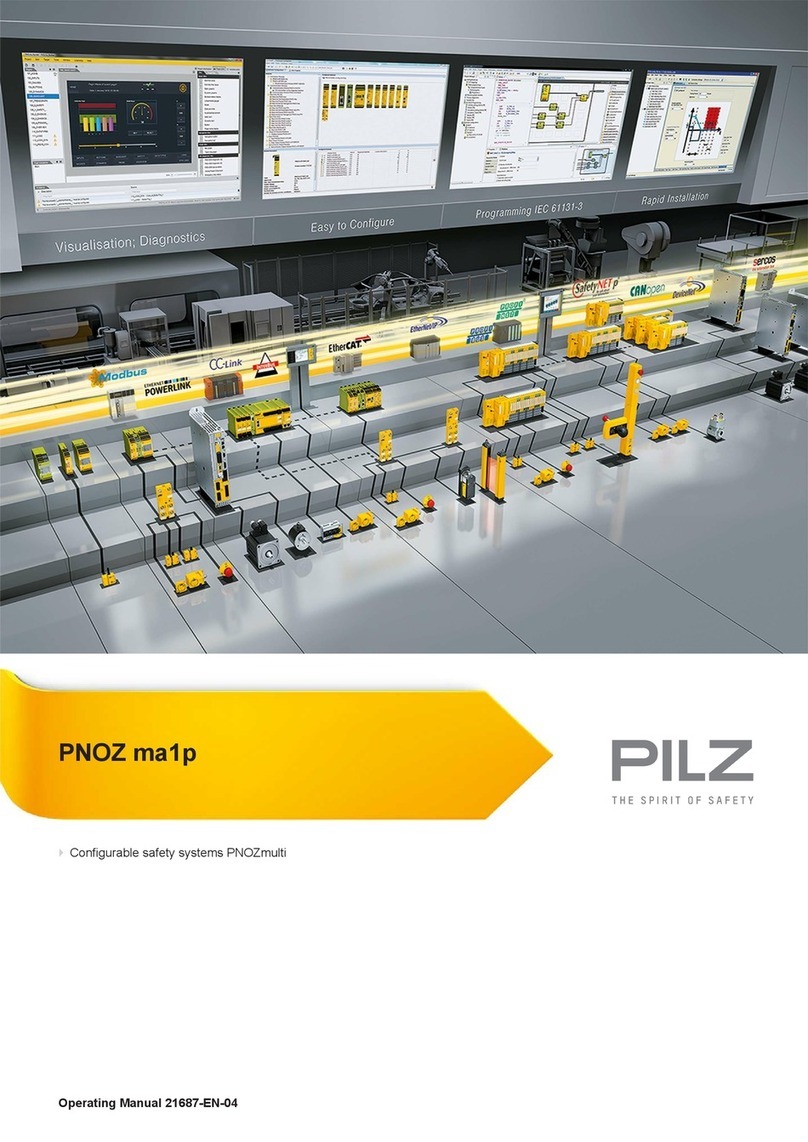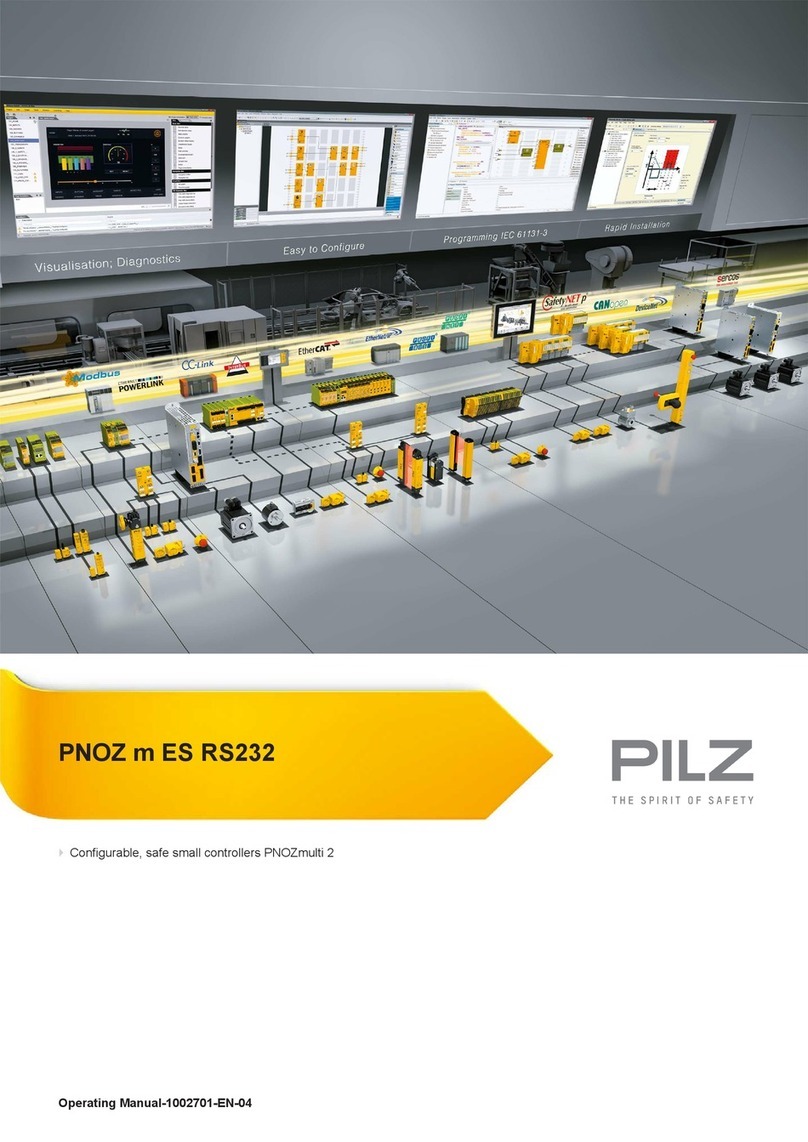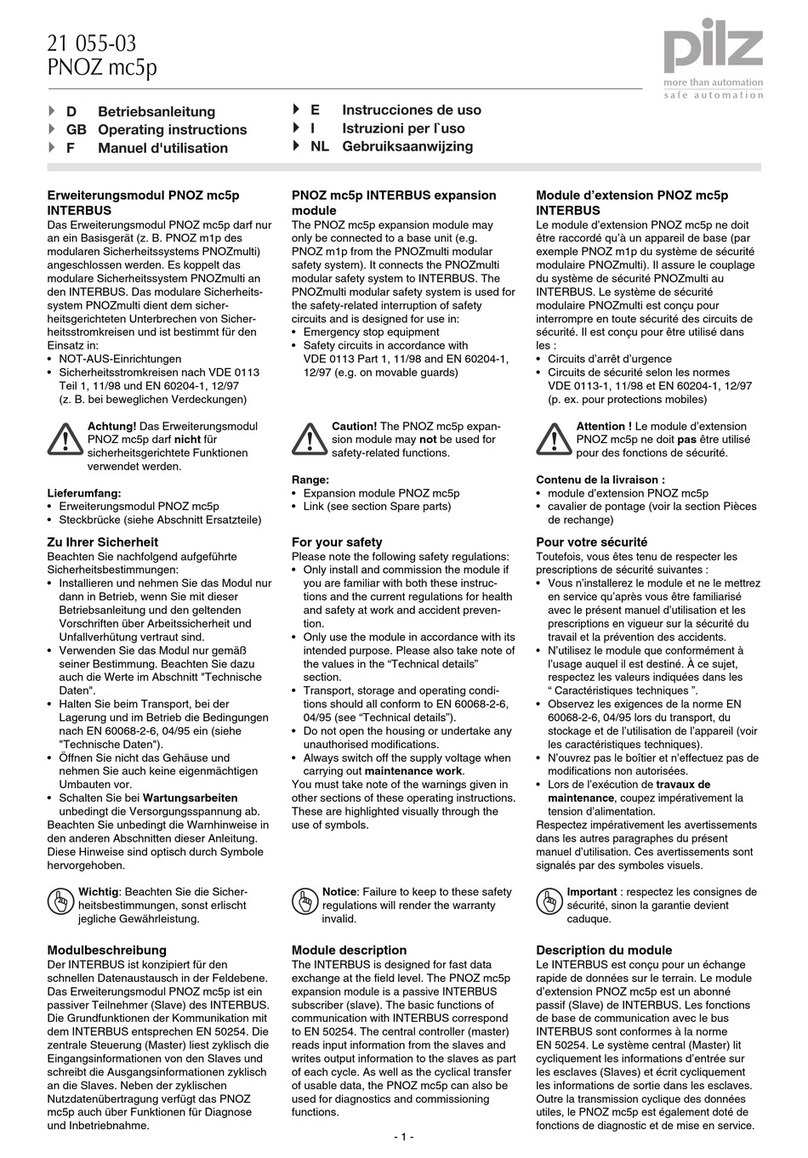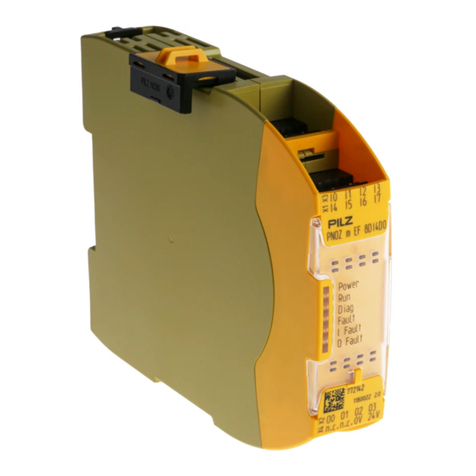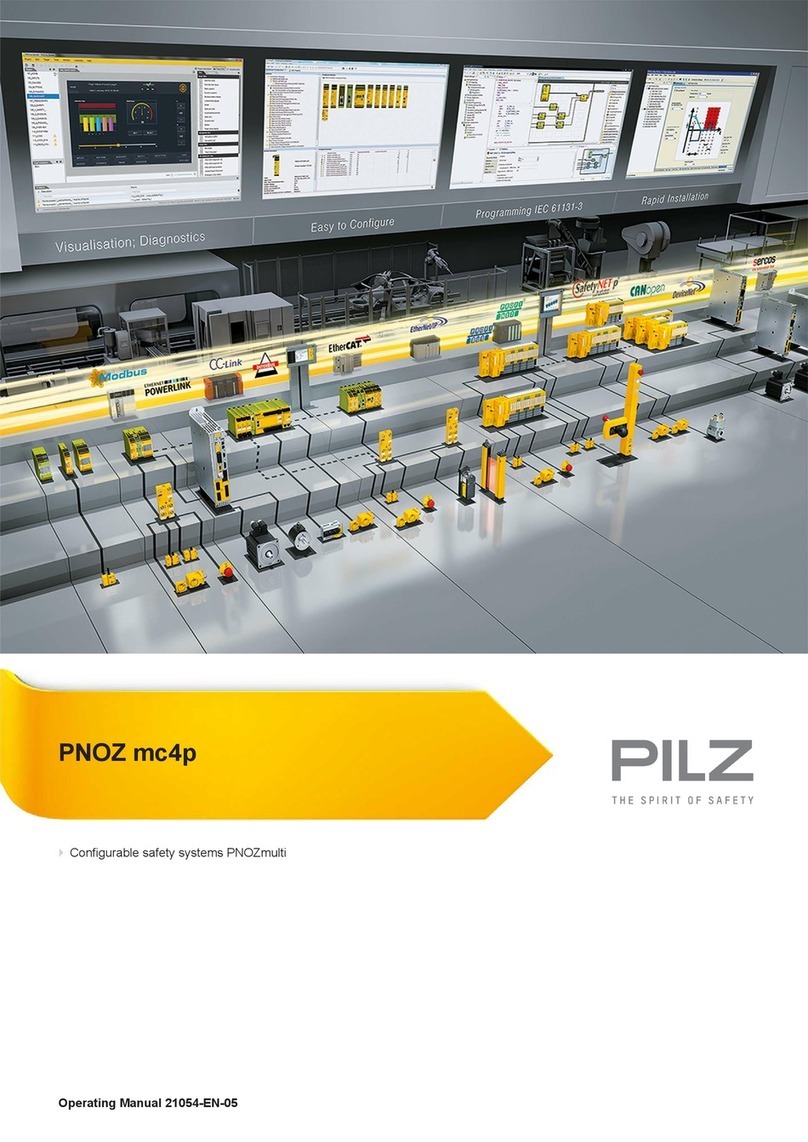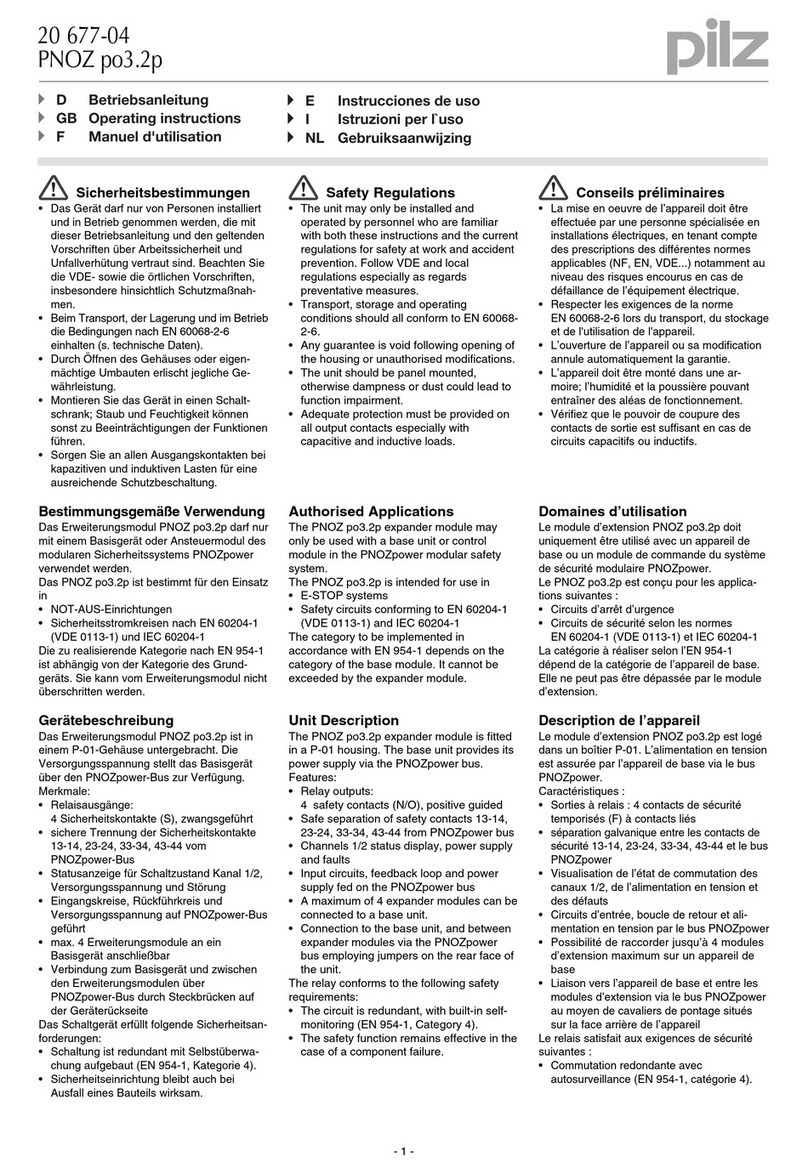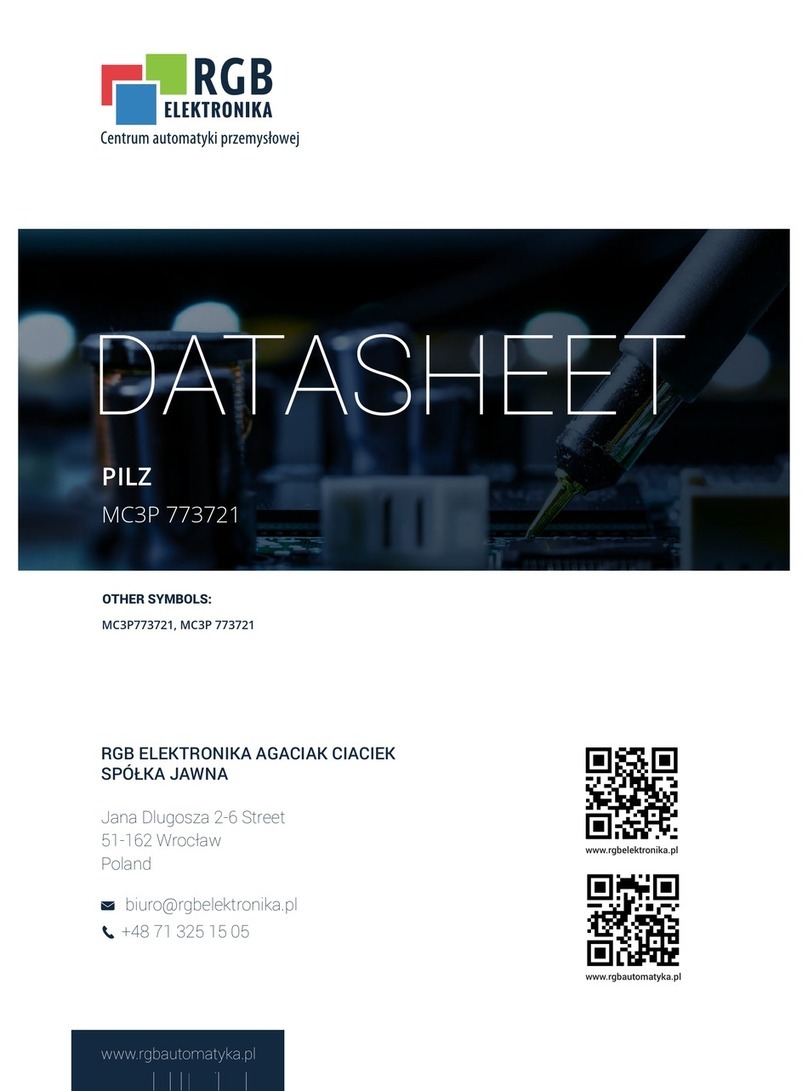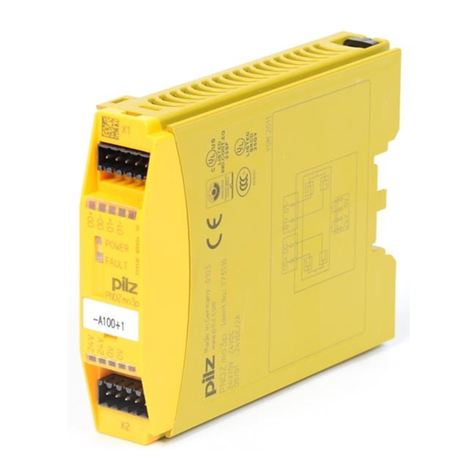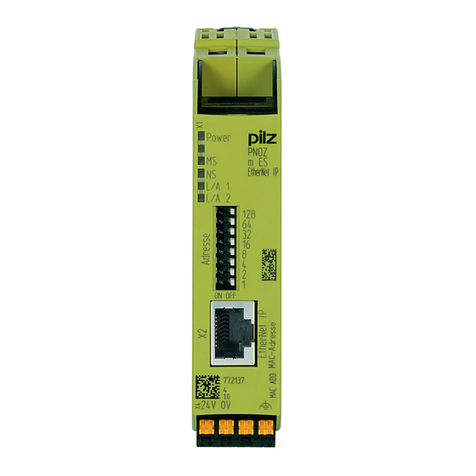
Table of contents
Manual PMC SR6 safety module
1005344-en-US-01
Pilz | ii
Table of contents
1 Foreword ..........................................................................................................................................................4
2 User information ..............................................................................................................................................5
2.1 Storage and transfer ..........................................................................................................................................5
2.2 Described product..............................................................................................................................................5
2.3 Timeliness..........................................................................................................................................................5
2.4 Original language...............................................................................................................................................5
2.5 Limitation of liability............................................................................................................................................5
2.6 Formatting conventions .....................................................................................................................................6
2.6.1 Use of symbols ..................................................................................................................................................6
2.6.2 Markup of text elements ....................................................................................................................................7
2.6.3 Mathematics and formulas.................................................................................................................................7
3 General safety instructions ............................................................................................................................8
3.1 Standards ..........................................................................................................................................................8
3.2 Qualified personnel............................................................................................................................................8
3.3 Intended use ......................................................................................................................................................9
3.4 Decommissioning ..............................................................................................................................................9
4 Safety module PMC SR6 ...............................................................................................................................10
5 System design and function.........................................................................................................................11
6 Technical data................................................................................................................................................13
6.1 Safety-related variables ...................................................................................................................................13
6.2 System times ...................................................................................................................................................14
6.3 Interface classification .....................................................................................................................................15
7 Connection .....................................................................................................................................................16
7.1 Connection compliant with EMC......................................................................................................................16
7.2 X12 terminal.....................................................................................................................................................16
7.3 Parallel connection ..........................................................................................................................................19
8 Commissioning..............................................................................................................................................20
8.1 Putting the safety module and drive controller into operation..........................................................................20
8.2 Activating STO.................................................................................................................................................21
8.3 Deactivating STO.............................................................................................................................................21
9 PMC SR6 and SS1 .........................................................................................................................................22
10 Diagnostics ....................................................................................................................................................23
10.1 Parameters ......................................................................................................................................................23
10.1.1 E53 | Required safety module | G6 | V3 ..........................................................................................................23
10.1.2 E54 | Information safety module | G6 | V0 .......................................................................................................23
10.1.3 E67 | STO active | G6 | V0...............................................................................................................................23
10.2 Events..............................................................................................................................................................24
10.2.1 Event 50: Safety module..................................................................................................................................24
